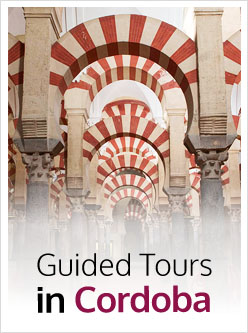Around the year 1521 Bishop Alonso Manrique told the Cathedral Chapter his intention to create a new space to substitute the one that up to that moment was used as Main Chapel. Two years later, the works in the transept started, led by Hernán Ruiz I el Viejo, Senior Master of the Cathedral, who designed the new building and worked in it until he died in 1547.
The new church was erected in the heart of the old Mosque, occupying part of the spaces that belonged to Abderraman II and Almanzor’s extensions. It had a rectangular floor, three naves and a big transept, and its great verticality contrasted with the horizontality of the Muslim construction. The result was a building which was unique in the world, not only because of the quality of the architecture from the times of the caliphs, but because of the appropiate way to fit a Cathedral inside the Mosque. In spite of existing numerous architects who have continued and altered Hernán Ruiz I’s initial project, the original plan has been maintained throughout the years.
Far from demolishing the naves from the time of the caliphs, what the master did was to reuse them, incorporating them as side naves in series of three arches where the different sections were covered by Gothic ribbed vaults. Between the main and side naves three big pointed arches were developed, which support the pressure from the choir and nowadays they are interrupted by the choir stalls, organs and side chapels.
The same year when the works in the transept started, Bishop Manrique was transferred to Seville, and he was taken over by Brother Juan Álvarez de Toledo (1523-1537). During his mandate, the works continued at a good pace, and they built the cornice-passageway surrounding the walls of the transept. They even closed the side naves, the ones around the apse and the end of the new main church.
Brother Juan Álvarez de Toledo was succeeded by Leopoldo de Austria, who leads the diocese from 1541 until his death in 1557. Leopoldo was Emperor Carlos I’s uncle, an educated man and patron of numerous works in our city. During his mandate, the pace of the works of the transept did not decrease, and, in approximately 15 years, the closing walls in the apse and arms were elevated. Besides, he was in charge of appointing Hernán Ruiz II el Joven (the Young) Senior Master of the works, substituting his father, who died in 1547.
With Hernán Ruiz II the works in the transept took a different look. With his clear Humanist training (he studied next to the master Diego de Siloe), this young architect respected to a great extent the lines started by his father, as can be seen in the Gothic ribbed vaults in the arms of the transept. Nevertheless, when working in the walls, he used plans which were clearly inspired in the Renaissance period and in the architecture by the Italian Sebastiano Serlio.
It is strange but, after Hernán Ruiz II’s death in 1569, the works in the Cathedral came to a complete halt for almost 30 years. That means that we need to go back to 1597, when Bishop Francisco Reinoso y Baeza arrives in Córdoba, to notice some activity in the factory. After seen its state, the Bishop decides to summon his friend Diego de Praves, who was then Senior Master of the Cathedral of Valladolid, in order to project the dome which today covers the choir nave. Besides, Praves designed the elliptical dome which covers the transept and the big arch of the antechoir, clearly from the Renassaince period, and with a structure called serliana, consisting in a lintel and spaces with round arches.
The works carried out by the architect from Valladolid were first-hand supervised by Juan de Ochoa, Senior Master of the Council, and considered the clearest representative of Mannerism in Córdoba. The responsible for the decoration was the engraver Francisco Gutiérrez Garrido, and it was finished in the year 1602, thus completing a vast iconographic programme that we will try to simplify as best as we can in the following section.
On the 7th September 1607, the works of the Main Chapel and the new choir were finished, and Juan de Ochoa, although he died soon afterwards, managed to complete the façade of the retrochoir. The new Bishop of Córdoba, Brother Diego de Mardones, had just arrived.
If you wish to know the works in the transept of the Mosque-Cathedral of Córdoba, do not hesitate to hire one of our guided tours. We are experts in the interpretation of the historic heritage from Córdoba. If you have chosen to do sightseeing in Córdoba, choose a high quality option, choose ArtenCórdoba.
Text: J.A.S.C.


All the information about the monuments, festivals and places of interest in Cordoba… at a click!
If you want more information about the monuments of Cordoba, before doing your guided tours, here is the most complete guide, written by the tour guides and historians of our team
Over 2,000 items!
Mosque-Cathedral
Medina Azahara
Alcazar of the Christian Kings
Synagogue
The Museums
The Coutyards

All the information about the monuments, festivals and places of interest in Cordoba… at a click!
If you want more information about the monuments of Cordoba, before doing your guided tours, here is the most complete guide, written by the tour guides and historians of our team
Over 2,000 items!















